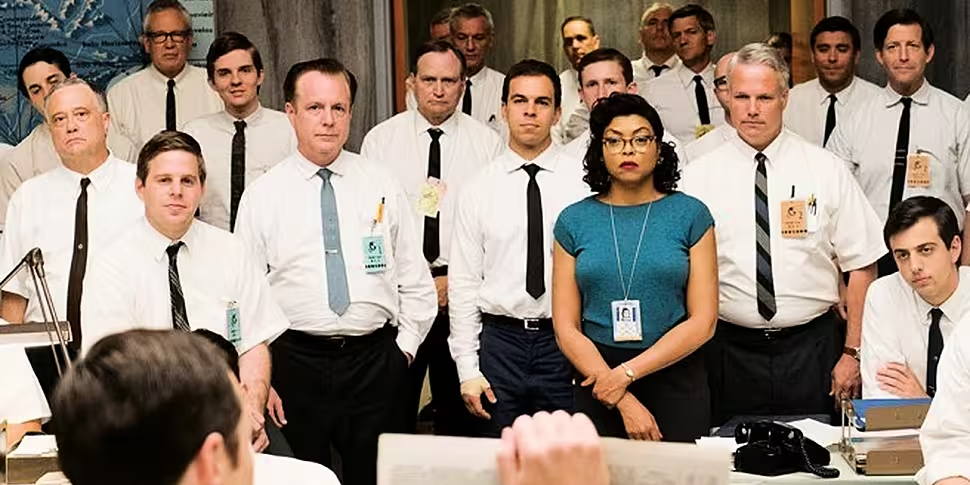Is there a mathematical theorem for feel good? If there isn’t, Hidden Figures makes a decent stab at determining one, the joyous mix of space race and space racism lifted from the gravity of historical importance by the thrust of its three female leads.
Hidden Figures, now a genuine contender in the Oscar race for ‘Best Picture’, is far from a perfect film, but it has come out at the perfect time. With the matter of black lives in America even more fraught now that Obama is out of the White House, the film shines on screen as a fun and earnest true-life story of three African-American mathematicians. These are intelligent who helped chart the path of mankind across the heavens while blazing a trail back on Earth for black people in general and black women in particular.
Doing the math
The film properly kicks off after a negligible montage with three of NASA’s computers, the name given to these pencil-skirt-wearing number crunchers, on the side of a Virginia road, their powder blue Chrysler causing problems on the way to work. The film set in the same state and the same time as Loving, it’s not long before a traffic cop pulls over and Dorothy (Octavia Spencer) presses Mary (Janelle Monáe) to remain polite, while the bookish Katherine (Taraji P Henson) loiters in the background. Learning who they are, he offers them an escort, doing his own part to help Uncle Sam make it off the planet before the USSR.
“Three negro women are chasing a white police officer down the highway in Hampton, Virginia, in 1961,” Monáe’s Mary remarks, “Ladies, that there is a God-ordained miracle!”
Getting off the ground
But problems persist everywhere for the three, a constant undercurrent of institutional racism undercutting them on the job. Mary, played with spunk and determination by the musician, wants to be an engineer and is smart enough to know if she were a white man, she already would be. Katherine, a prodigious maths genius who graduated from college at 18, has the nous needed to calculate how to send an (American) man into space and get him back down, but also has to run 20 minutes to get to the nearest ‘colored restroom’ when nature calls, which it tends to after drinking coffee from her segregated coffee pot.
Dorothy has it toughest of all. Turned down for a promotion by not even getting considered, she also sees the writing on the wall, as well as the IBM screen. The de facto supervisor of all of the black female computers, she knows that the time is coming when their skills will no longer be useful or needed, and that they will soon be replaced by an expensive computer system nobody can figure out how to work.
Plotting a straight line
Just as a2 + b2 = c2, we know that history is going to ultimately do right by these women, that their value to their employers and colleagues will become clearer and clearer, and that they will achieve their goals. With surprise subtracted from the equation, the real variable becomes the likeability of the cast. All three leads make for warm and charming characters, working around the system designed to keep them down, their frustrations growing exponentially towards a successive run of breaking points. When those come, they’ve earned them, and it’s hard to imagine anyone in the audience won’t be cheering them along.
Significantly less developed are the supporting players, with Kirsten Dunst and Jim Parsons, actors whose resting bitch faces cannot be rivalled, are underused and poorly drawn, the kind of stock racists whose perfunctory prejudices offer very little analysis into why generations of Americans still to this day look down as their countrymen and women. But this isn’t their movie, and labouring on the misery would draw from the bright and rousing tone that director Theodore Melfi is shooting for. Besides, Kevin Costner’s grumpy pragmatist turned idealist does the heavy lifting when it comes to assuaging any white guilt, though the less said about that pee line of dialogue the better.
Hidden Figures has no hidden depths, it is exactly what you think it is going to be: an unashamedly fun look at the ignored and forgotten women who helped shape NASA. And in reaching for the stars, Spencer, Henson, and Monáe establish themselves as ones as well.
Verdict: Few surprises, but there's no denying that it adds up to something special.
Hidden Figures (PG/121mins) is released nationwide on February 17th.









